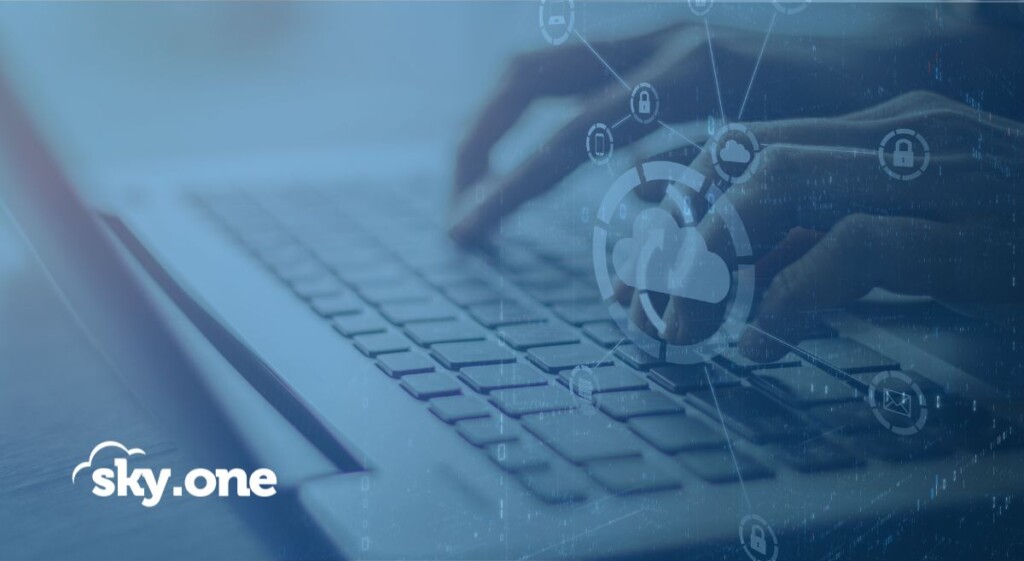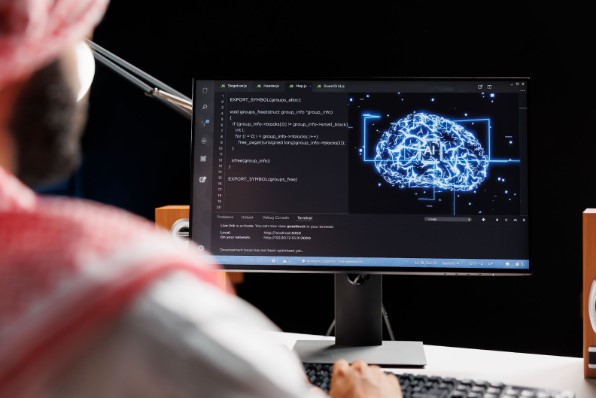The SOC , Security Operations Center, is an information security structure that has become fundamental for companies today.
It offers analysis, constant monitoring and quick and efficient response to incidents and cyberattacks. This is because it combines advanced technologies and human expertise to protect assets.
Faced with a scenario where cyber threats are constantly proliferating, adopting a SOC has become a necessary investment.
According to research by Check Point Research, the number of cyber attacks worldwide in the first quarter of 2024 grew 28% compared to the last quarter of 2023.
Therefore, in this post, we will explore the main technologies used in a modern SOC, detailing their functions and benefits, and how they can contribute to the security of your company .
Stay with us!
What is SOC?
The SOC , or Security Operations Center, is the basis for organizations' cyber defense It is a centralized installation that monitors and manages digital security through a mix of human expertise and cutting-edge technology .
The SOC acts as the front line of data and systems defense, proactively analyzing and responding to cyber incidents . Some of its functions are:
- Continuous monitoring: 24/7 surveillance of the entire IT infrastructure to ensure security;
- Threat detection: through accurate analysis, they identify possible threats and order them according to their severity;
- Incident Response: Mitigation of ongoing attacks and rapid response to security incidents to limit damage;
- Vulnerability management: comprehensive and continuous assessment of system vulnerabilities to find weaknesses and correct them.
How important is it for cybersecurity today?
The importance of SOC is immense for organizations of different sizes that want to protect their assets. This is because it continuously monitors operations, detecting and responding to threats in real time .
The SOC team is made up of information security , who use advanced tools to identify anomalous behavior and respond quickly.
In addition, the SOC also performs post-incident analysis , helping to improve processes , mitigate vulnerabilities and prevent future attacks.
proactively strengthens the company's security posture in a global scenario in which cyberattacks are more constant and causing great economic impact.
In the financial sector, for example, according to the IMF , banks, insurance companies and asset managers have suffered numerous cyber attacks in recent decades, generating losses of an incredible US$12 billion to the global financial sector.
The main technologies used in a SOC
A Security Operations Center ( SOC ) uses various technologies to ensure the security of IT infrastructure and business data.
These are advanced tools such as intrusion detection systems (IDS), intrusion prevention systems (IPS), firewalls, security information and event management systems (SIEM), threat intelligence, and antivirus and anti-malware software
These technologies complement to respond to security incidents effectively . Discover the main ones below:
SIEM (Security Information and Event Management)
SIEM ( Security Information and Event Management) is one of the main monitoring tools of a SOC, as it allows organizations to detect, prevent and respond to security threats.
It collects and analyzes security data from multiple sources, making it easier to identify and respond to incidents. This provides security analysts with a complete view of network and systems activities.
Main features and benefits
As we have seen, SIEM plays a vital role in strengthening cyber defenses.
Its function is to monitor systems, assets and networks, collecting and analyzing event data and logs in real time . This enables early detection of suspicious activity and rapid response action to mitigate potential damage.
Additionally, SIEM offers detailed reports for trend analysis and compliance.
Understand a little more about what advanced SIEM systems offer when adopted:
- Data collection: event records and logs from various sources;
- Event correlation: combines data from multiple sources to identify threat patterns;
- Alerts: generates notifications about suspicious activities, allowing quick action;
- Operational visibility: complete view of the operational security of IT infrastructure.
IDS/IPS (Intrusion Detection System/Intrusion Prevention System)
Another component of the SOC detection and prevention technologies , which monitor traffic and prevent malicious activity. These are called IDS and IPS. Next, we will understand what each of them means.
- IDS (Intrusion Detection Systems): software and hardware solutions identify suspicious or unauthorized activities in networks and systems in real time. They record information about potentially malicious activities and issue alerts to security teams;
- IPS (Intrusion Prevention Systems): these systems go beyond the capabilities of IDS, offering proactive functionalities , being able to block or prevent malicious traffic before it reaches targets on the network. They are deployed at strategic points in a network to analyze and act immediately, thus providing a crucial layer of protection.
IDS/IPS main features and benefits
IDS and IPS offer several benefits for information and systems security . They identify anomalous activities, blocking intrusion attempts, protect against malware, brute force attacks and vulnerability exploitation. Its real-time response capacity is extremely relevant to mitigate risks and avoid losses inherent to data breaches and system attacks.
- Detection of intrusion attempts and network attacks;
- Automatic blocking of malicious activities;
- Prevention of cyber attacks;
- Monitoring network traffic in real time;
- Generation of alerts for investigation.
Next Generation Firewalls (NGFW)
Next Generation Firewall (NGFW), as the name suggests, is an evolution of a traditional firewall. This tool is designed to protect against the modern cyber threats that businesses face.
In addition to the functionalities of traditional firewalls, NGFWs offer more advanced security features that allow for more comprehensive and sophisticated protection, as they integrate several security tools into a single device.
Main features and benefits (NGFW)
The application of NGFWs guarantees broad security through advanced features such as:
- Deep packet inspection: detailed scanning of the contents of data packets to identify anomalous behavior and hidden threats;
- Application control: managing access to specific applications, allowing the definition of security policies, blocking unwanted applications or prioritizing traffic from business-critical applications;
- Threat prevention and protection: Integration with threat intelligence system to block known attacks and emerging threats;
- In addition to the clear security benefits, adopting Next Generation Firewalls improves visibility and control , speed of response to threats and efficiency .
Therefore, it proves to be a complete and very beneficial tool for organizations.
EDR (Endpoint Detection and Response)
This is another technology that is very present in the SOC. EDR, or Endpoint Detection and Response, is a solution aimed at protecting endpoints , that is, computers, smartphones and servers, from malware, ransomware and other advanced threats.
EDR main features and benefits
EDR provides detailed visibility into endpoints, detecting suspicious behavior. Additionally, it offers automated remediation and insights into the origin and impact of threats.
But how does he do this? EDR systems collect and analyze activity data. This data includes information about running processes, network connections, file system modifications, and user behavior. With this, it is possible behavior patterns
In summary, EDRs offer:
- Detection of malware, ransomware and other advanced threats on endpoints;
- Investigation and analysis of incidents on endpoints;
- Automatic response to malicious activity;
- Protection against “fileless” attacks;
- Monitoring the behavior of endpoints in real time.
Threat Intelligence
Threat Intelligence is a technology that involves collecting and analyzing information about potential and emerging threats. Its objective is to better understand the intentions, motivations and capabilities of attacks, in order to accurately direct defense resources and mitigate risks.
Main features and benefits Threat Intelligence
Among the main features of a Threat Intelligence system are:
- Data Collection: collecting information from various sources, such as research reports, intelligence feeds, online forums, records of previous incidents and even honeypots (bait systems that attract attacks for study);
- Data Processing: collected data is processed to filter and standardize relevant data;
- Trend and pattern analysis: understanding the tactics, techniques and procedures (TTPs) used by attackers, allowing organizations to adapt their defenses to protect against these methods;
- Dissemination of Insights: insights are created from these analyses, which are distributed to the responsible sectors within the organization.
Threat Intelligence improves an organization's cyber defenses, as it is all based on data and specialized analysis. Furthermore, intelligence systems as seen above can provide companies with:
- Improvement of security ;
- More efficient responses to incidents;
- Resource savings;
- Identification of indicators of compromise (IoCs);
- Increased trust among customers and employees.
Security Orchestration, Automation, and Response (SOAR)
Security Orchestration, Automation and Response, or SOAR, is a technology that integrates and automates security processes, increasing SOC efficiency.
These solutions enable the integration of varied security systems and automation of repetitive tasks, in addition to offering a coordinated workflow for incident response.
SOAR main features and benefits
SOAR reduces incident response time by automating complex tasks. Improves collaboration between teams and provides a holistic view of security processes. Its main features and benefits are:
- Tool integration: SOAR allows security teams to connect and synchronize different security technologies, optimizing shared resources and data;
- Task automation: automation is based on playbooks or predefined scenarios that trigger automated responses to security events, reducing the need for human intervention;
- Incident response coordination: Case management functionalities within SOAR solutions enable the collection and organization of incident-related information, facilitating a faster and more informed response.
Protect your company with SOC Skyone
Skyone offers a complete and managed SOC (Security Operations Center), with the best technologies and experienced professionals to protect your company against the latest cyber threats.
Our SOC monitors your network and systems 24 hours a day, 7 days a week, responding to incidents quickly and effectively to ensure the security of your information and the continuity of your business.
Want to know more about how our SOC works? Request a demo of our platform!
Conclusion
As we saw in this article, the SOC, or Security Operations Center, is essential for companies that want to protect their digital assets.
This structure allows the detection and response to threats in an agile and effective way, ensuring information security. This is because it uses advanced data analysis, monitoring, prevention and response technologies, keeping systems always secure.
We could see that, among the main technologies of a SOC are SIEM, IDS, IPS, Next Generation Firewalls, EDRs, SOAR and Threat Intelligence.
Each has its own particularity and functionality, but together they offer robust protection against the most varied digital threats.
Therefore, having a SOC is a vital measure to guarantee the security of your business information and avoid losses and headaches.
Are you interested in the topic and want to know more about SOC? Visit our special guide!




